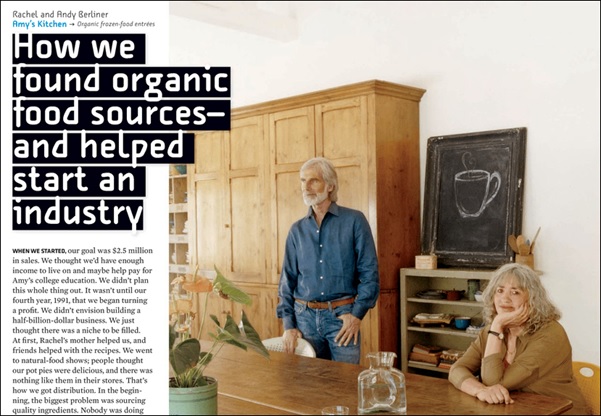
The more persuasive your link pitch, the more likely a publisher is to give you what you want – a nice juicy link. But for that to happen, there must be a human interaction between the person who is looking for a link and the person who is prepared to give the link. It’s unlikely that you’ll be able to find out the true nature of this interaction, but you can make a pretty good guess by looking at both the ‘source URL’ and the ‘target URL’ in Majestic.
We can use the guesses that we make to improve our own chances of success. Majestic is a tremendous tool for understanding these interactions. Each result in the Backlinks tab is a ‘window’ into the transaction behind it.
Let’s illustrate with an example.
I read a lot of business publications online and off-line in my daily work and I pay particular attention to publications that give ‘editorial links’. I’m always keen to understand what the article is about and why the journalist decided to write it and give a link. And particularly, I want to understand when the link points to deep content within the site, rather than just to the home page. For me, this is an ongoing research project and if I have a bit of spare time, I’ll pick a few examples and dive into Majestic to see what I can find.
Yesterday afternoon, a client delayed a meeting by about 30 minutes and I got a chance to do a little research. Too short a time for me to start something new, but too long to waste twiddling my thumbs. So I opened up my digital subscription to the latest issue of Inc Magazine – my favourite business read because it focuses so much on people’s stories – that are full of emotion and personal revelations.
I came across this story in the magazine reporting on Amy’s Kitchen [http://amys.com] – initially, a small company intended to fund Amy’s college education, but which instead, became a half-billion dollar company that managed to avoid corporate takeover and remained close to its ethical roots – unlike many competitors.
I thought taking a quick look at the company might be worthwhile – Amy’s Kitchen has a good link profile:
What is remarkable is the quality of those links. There are 2 things in particular that I can get from the backlinks:
- The identity of the journalists or bloggers who have written about the company
- The articles themselves will often quote other companies of a similar nature
Links such as this one from the New York Times:
The article on the New York Times tells the story of how organic food purists worry about big company influence – many of the organic food companies that started up around the same time as Amy’s, were bought out by large corporates.
However, Amy’s Kitchen and a few other companies refused to be bought out.
The human interaction between Amy’s and the journalist is clear – they shared the same passion:
As reported in Inc Magazine, Amy’s Kitchen says:
“All the big food companies at one time or another have made an offer or shown interest. But we always knew we wanted to stay private and family owned.”
The reporter shared the same view:
“Over the last decade, since federal organic standards have come to the fore, giant agri-food corporations like these and others… have gobbled up most of the nation’s organic food industry. Pure, locally produced ingredients from small family farms? Not so much anymore.”
Four other companies who share the same ethos are mentioned in the article:
These companies are strong, independent minded entities that share the views of both Amy’s and the journalist. Therefore are likely to have links from committed and influential bloggers and websites – and should provide a rich vein of link prospects:
To explore this, I added the sites to the bucket and then sent them to Clique Hunter and here are the results:
Normally, I’d feel that 4 domains weren’t enough to give me great results in Clique Hunter. But in this case, the quality of the prospects I found was high. I’d put this down to the quality of the businesses that I selected. Furthermore, in Clique Hunter, there were 10 pages of results of prospects that linked to all 4 domains – more than I would normally expect.
Final words
This simple exercise produced some high quality results, even though I only based it on 4 domains. I think this is because:
- The businesses themselves had a strong ethos
- The journalists and bloggers who wrote about them also had a strong ethos
- Therefore, the people that linked to these sites would be likely to have the same strong ethos.
This test and analysis was done quickly but it is left me with an intriguing question. Would focusing only on companies that had a strong ethos and using them in Clique Hunter, be a model for exploring any particular niche?












How many links(suggest a range if possible) is Good enough approx. to rank a medium competition KW in Google 1st Page. I know it will vary from product to product but since you guys have understood by studying the links. My site (link removed) is on 2nd and 3rd page for the past 4-5 months. Can you suggest some changes?
Many Thanks, Any suggestion will be highly appreciated
August 10, 2017 at 7:45 pmRegards,
Sandy
Probably a bit simplistic, but I guess the simple answer is ‘More than the other companies on 1st page’. With links, like any google ranking factors, there is no set number required to get to the first page – the main thing is to have more than the competition. And when the competition notice they’re falling behind, they may increase their own numbers, so the number required keeps changing…
September 8, 2017 at 8:29 amAhrefs would help you to figure out how many links are nesessary
September 9, 2017 at 6:22 pmNo, I am afraid they wouldn’t. I am talking in detail about "how many links is enough" on Friday at BrightonSEO, but they absolutely cannot answer that question. In many regards it is unanswerable, because links have wildly different strengths. In addition, their metrics are based on search visibility, not on link equity – which is a fine methodology, but fundamentally a different approach to Flow Metrics.
September 12, 2017 at 5:42 pmstill leaning about the majestic flow metrics~
August 14, 2017 at 4:27 pmProbably a bit simplistic, but I guess the simple answer is ‘More than the other companies on 1st page’. With links, like any google ranking factors, there is no set number required to get to the first page – the main thing is to have more than the competition. And when the competition notice they’re falling behind, they may increase their own numbers, so the number required keeps changing…
September 8, 2017 at 8:32 am